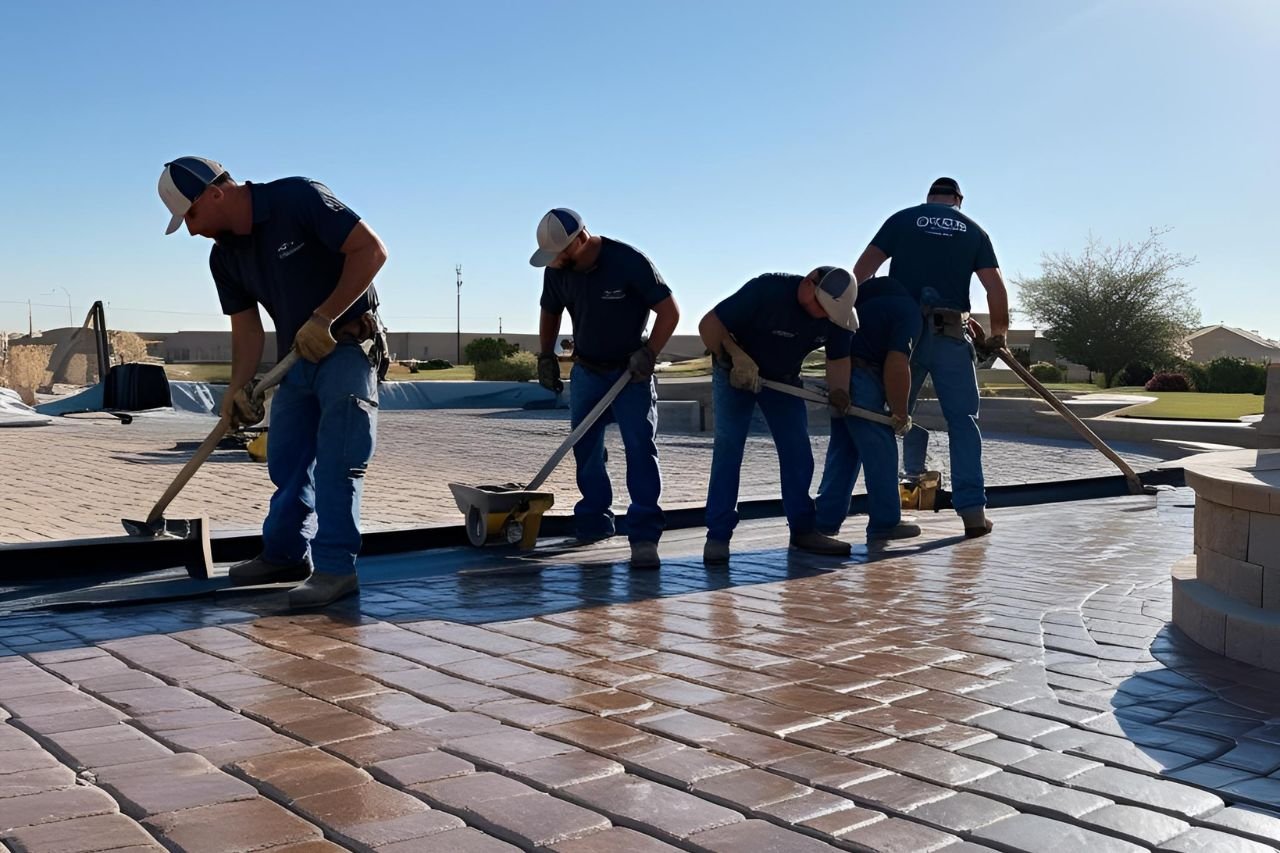A paver installation project in Odessa typically takes 3–7 days, depending on factors like project size, material type, and site conditions. Larger spaces, such as driveways, may require more time, while smaller patios or walkways can be completed quicker.
Factors That Affect Project Timelines
The timeline for a paver installation project depends on several variables, including preparation, material selection, and weather conditions. Proper planning ensures the job progresses smoothly while minimizing delays. Homeowners in Odessa benefit from working with professionals who streamline the process and deliver quality results.
How Long Do Different Installations Take?
Timeframes vary based on the type and size of the project:
- Small Patios (200 sq. ft.): 2–3 days.
- Medium Walkways (300–500 sq. ft.): 3–5 days.
- Large Driveways (1,000+ sq. ft.): 5–7 days.
Larger spaces require more excavation, materials, and labor, leading to longer timelines. For professional assistance with managing projects, explore paver installation services designed for Odessa properties.
How Does Preparation Affect Project Duration?
Site preparation, including clearing debris, leveling the ground, and addressing drainage, is critical for stable pavers. Poor preparation can delay the project or lead to issues like uneven surfaces.
Steps for proper preparation include:
- Clearing the Site: Removing existing structures or vegetation.
- Compact Base Layer: Ensuring a solid foundation with crushed stone or gravel.
- Drainage Solutions: Installing slopes or permeable pavers to prevent water pooling.
Professional installers assess conditions to avoid delays caused by common mistakes, such as insufficient preparation. For tips on avoiding errors, visit common installation mistakes and how to fix them.
Does the Material Type Influence Installation Time?
Yes, certain materials take longer to install due to their weight, size, or handling requirements.
- Concrete Pavers: Easy to work with, reducing installation time.
- Brick Pavers: Require careful alignment but offer a timeless look.
- Natural Stone Pavers: Heavier and needs precise placement, extending timelines.
For more information on choosing the best material for your project, refer to the best materials for paver installation.
How Does Weather Impact Paver Installation?
Rain or extreme heat can delay installation by affecting soil conditions or sealant curing times. For example:
- Rainy Days: Delay excavation and compaction.
- High Temperatures: Speed up drying, potentially causing uneven curing of joint sand or sealants.
Planning installations during favorable weather minimizes delays and ensures smoother progress.
How Do Labor and Equipment Affect Speed?
The availability of skilled laborers and proper tools determines how quickly the work is completed. Professional teams use advanced equipment like plate compactors and wet saws to streamline tasks.
DIY installations often take longer due to a lack of experience and proper tools. To understand the advantages of hiring experts, review why professional installation is superior.
Steps in a Typical Paver Installation Project
The process includes several steps, each contributing to the timeline:
- Excavation and Grading: Preparing the area for the base layer.
- Base Layer Installation: Compacting gravel or crushed stone for stability.
- Paver Placement: Arranging pavers in the desired pattern.
- Applying Joint Sand: Filling gaps between pavers to lock them in place.
- Sealing: Protecting the surface from weather and stains.
Residential vs. Commercial Installation Timelines
Commercial projects often cover larger areas or involve multiple surfaces, requiring more time than residential installations.
Residential projects typically:
- Focus on patios, driveways, and walkways.
- Use smaller teams with shorter timelines.
For insights into these differences, read residential and commercial paver installation differences.
What Common Issues Extend Paver Installation Timelines?
Delays happen due to:
- Improper Planning: Missing materials or permits.
- Weather Changes: Unexpected rain or storms.
- Unstable Soil Conditions: Requiring additional compacting or grading.
Do Delays Lead to Higher Costs?
Yes, prolonged projects result in higher labor and material costs. Addressing drainage, repairing the base, or rescheduling due to weather can increase overall expenses. Hiring professionals helps minimize delays and keeps projects on budget.
Timeline Comparison Table
| Project Type | Average Timeframe | Factors That Affect Timeline |
|---|---|---|
| Small Patio | 2–3 days | Minimal base preparation, easy access. |
| Medium Walkway | 3–5 days | Length and pattern complexity. |
| Large Driveway | 5–7 days | Excavation depth, material selection. |
Frequently Asked Questions
1. How long does it take to install a typical patio?
A small patio installation takes approximately 2–3 days, depending on size and preparation needs.
2. Can poor weather delay paver installation?
Yes, rainy or extreme weather can disrupt excavation or curing, extending timelines.
3. Does material choice impact project duration?
Yes, heavier materials like natural stone may require more time for placement and alignment.
4. How can I ensure my project stays on schedule?
Working with professional installers ensures efficient planning and execution.
5. Are timelines different for residential and commercial projects?
Yes, commercial projects often take longer due to larger areas and more complex requirements.
Call Us Today
A paver installation project in Odessa takes between 3–7 days, depending on size, materials, and site conditions. Working with experts ensures timely completion and high-quality results. Contact us to schedule professional paver installation services tailored to your needs.


